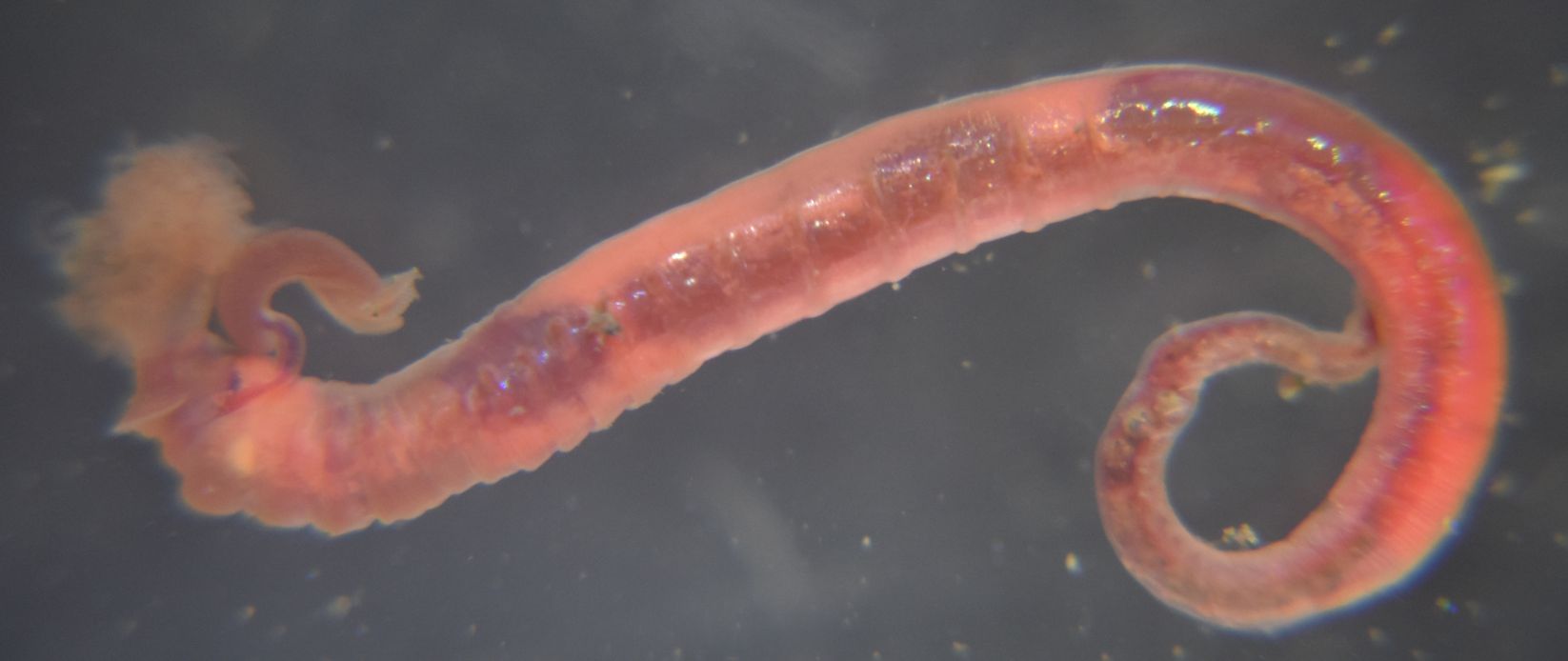Description: Polychaetes from family Trichobranchidae have segments mostly or completely as wide or wider than long. They have several to many long, threadlike, extensile unbranched tentacles closely associated with the mouth but that cannot be retracted into the mouth. One or more pairs of simple or branched gills are present behind the head region. The thoracic segments do not have soft pads on the ventral surface. The neuropodal uncini of the thoracic region have long handles. There is no distinct caudal region without setae, and the tube the animal may create is not stopped by an operculum. Terebellides stroemi has a distinctive single mid-dorsal gill near the anterior end with 4 partly fused, pectinate branches. All its tentacles are similar in shape and size. Note: Leslie Harris, a polychaete specialist at the LA Museum of Natural History, has informed me that T. stroemi does not actually occur on our coast so this specimen is another, undetermined Terebellides species). My thanks to him for this correction.
How to Distinguish from Similar Species: Terebellidae is a sister family. Terebellids have soft, light-colored pads on the ventral surface of most thoracic segments and their neuropodal uncini have short handles. Other local Trichobranchids have 2-4 pairs of gills which are not pectinately branched and some of the tentacles are longer and more slender than others are. The mid-dorsal gill with 4 nearly fused pectinate branches near the anterior end in this species is truly distinctive. Terebellides kerguelensis is a very similar species off Antarctica that has a single dorsal gill of 5 partly fused, pectinate branches.
Geographical Range: Cosmopolitan, at least in the North Atlantic and North Pacific Oceans, Spitsbergen in the Arctic Ocean, and in the Baltic Sea. The type specimen is from off Norway.
Depth Range: All the references I could find were subtidal.
Habitat: Infauna in soft bottoms
Biology/Natural
History: The stomach
of this species contains a 'digestive gland' involved both in secretion
and absorption (Michel et al., 1984). Tentacles
are used for feeding and gills
for breathing (gas exchange). Note the bright red of hemoglobin in the
gills.
| Return to: | |||
| Main Page | Alphabetic Index | Systematic Index | Glossary |
References:
Dichotomous Keys:Kozloff, 1987, 1996
General References:
Scientific Articles:
Hily, C., F. Le Loc'h, J. Grall, and M. Glemarec, 2008. Soft bottom macrobenthic communities of North Biscay revisited: long-term evolution under fisheries-climate forcing. Estuarine, Coastal and Shelf Science 78:2 pp 413-425. https://doi.org/10.1016/j.ecss.2008.01.004
Williams, Susan J. (1984). The status of Terebellides stroemi (Polychaeta; Trichobranchidae) as a cosmopolitan species, based on a worldwide morphological survey, including description of new species. In Proceedings of the first international polychaete conference, Sydney, Australia (pp. 118-142).
Web sites:
General Notes and Observations: Locations, abundances, unusual behaviors:
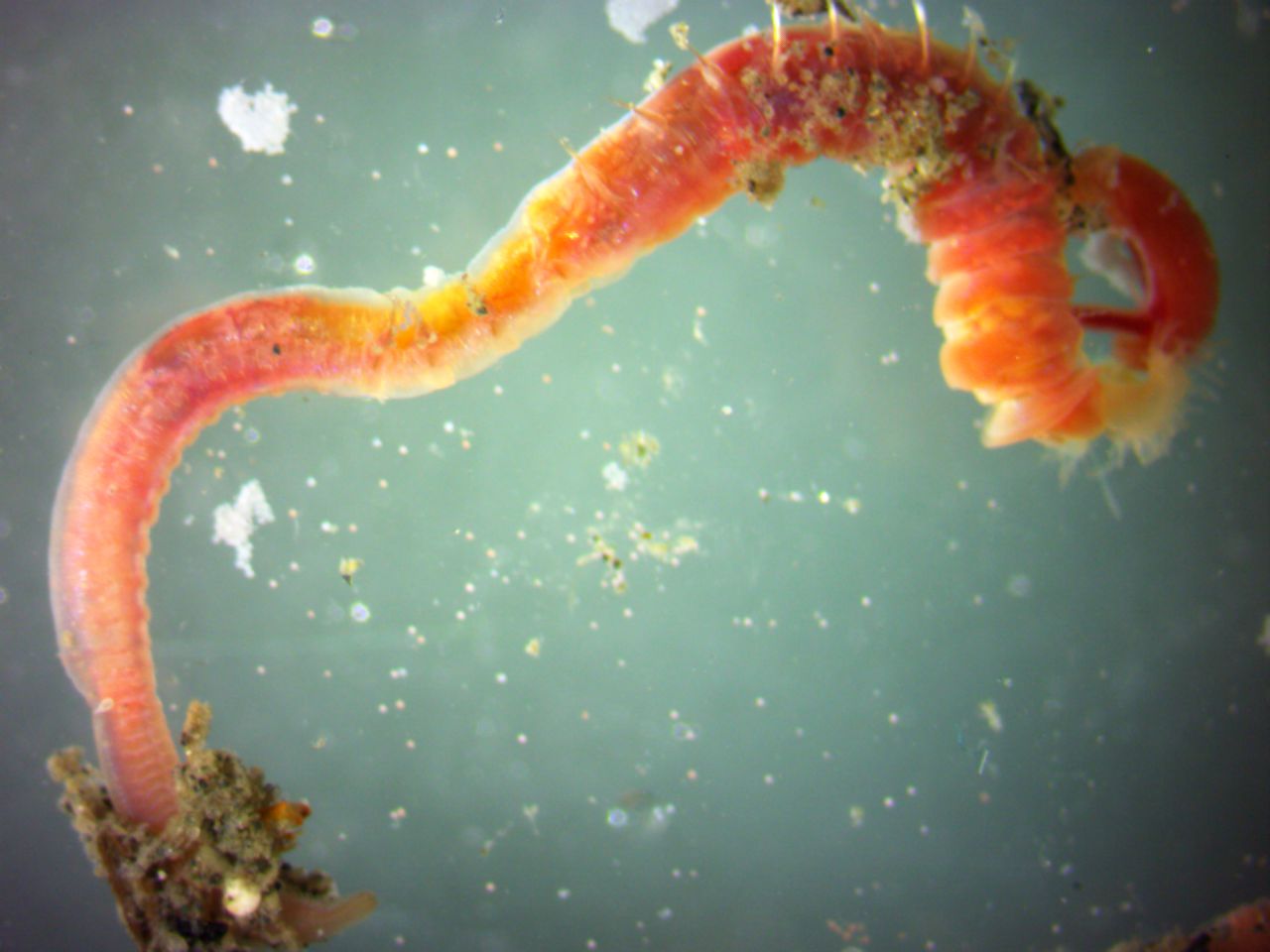
Another view of the whole worm, including part of the tube it had
built.
Note in all the photos the lighter-colored dots along the body, which
appear
to be eggs in the coelom. Photo by Dave Cowles, August 2018
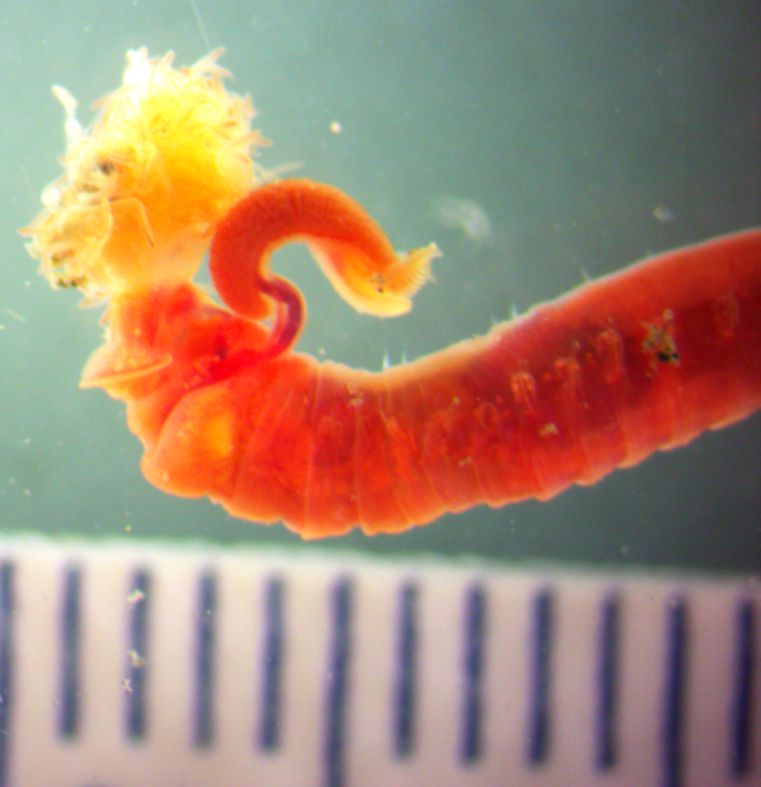
A close-up of the head region. The tangle of tentacles
appears yellow and the 4 partly fused gills
are red. Scale is millimeters. Photo by Dave Cowles, August 2018
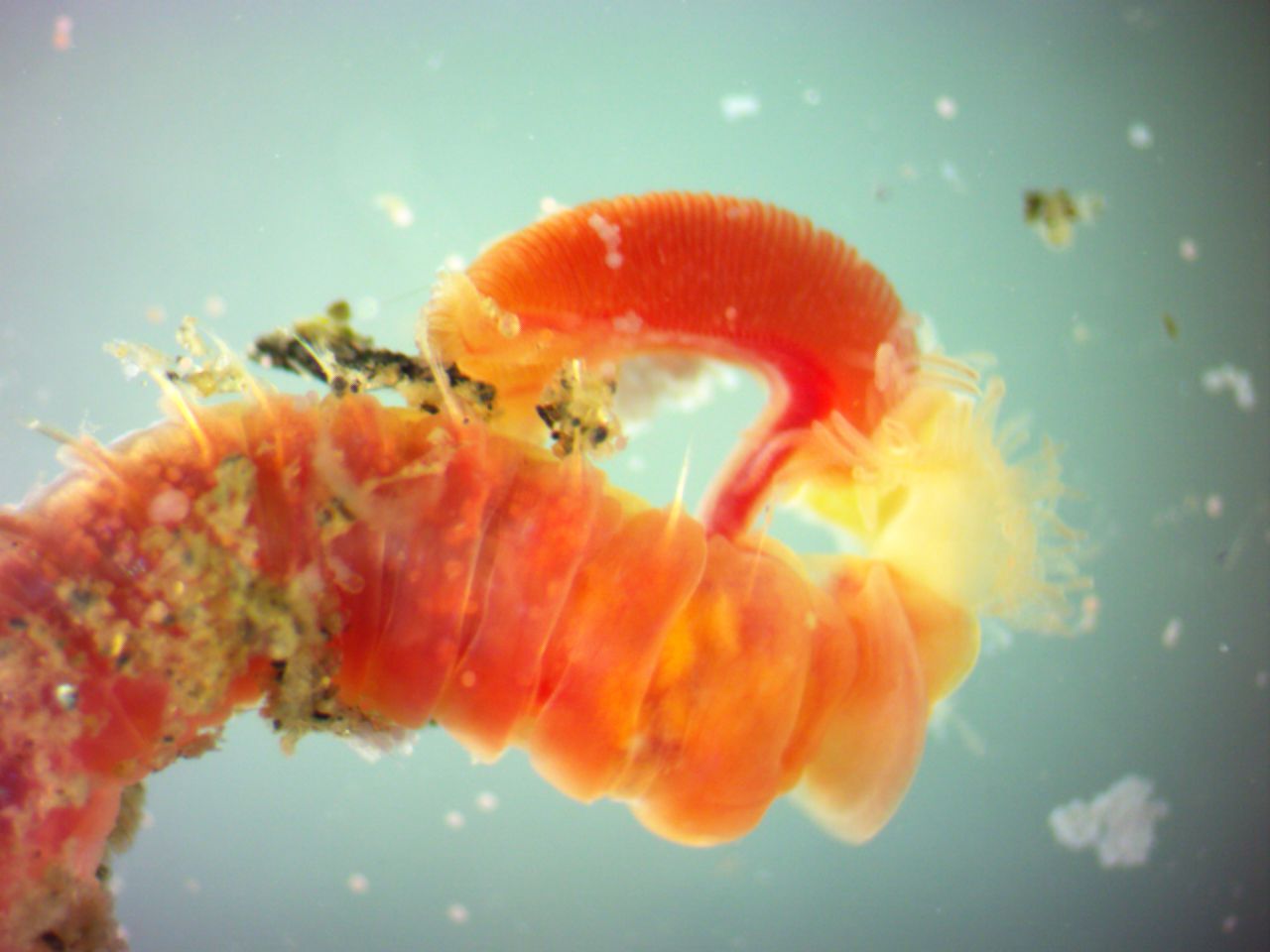
Another close-up of the head region. Note the eggs visible through
the body wall and the first few eggs which are being extruded. Photo by
Dave Cowles, August 2018
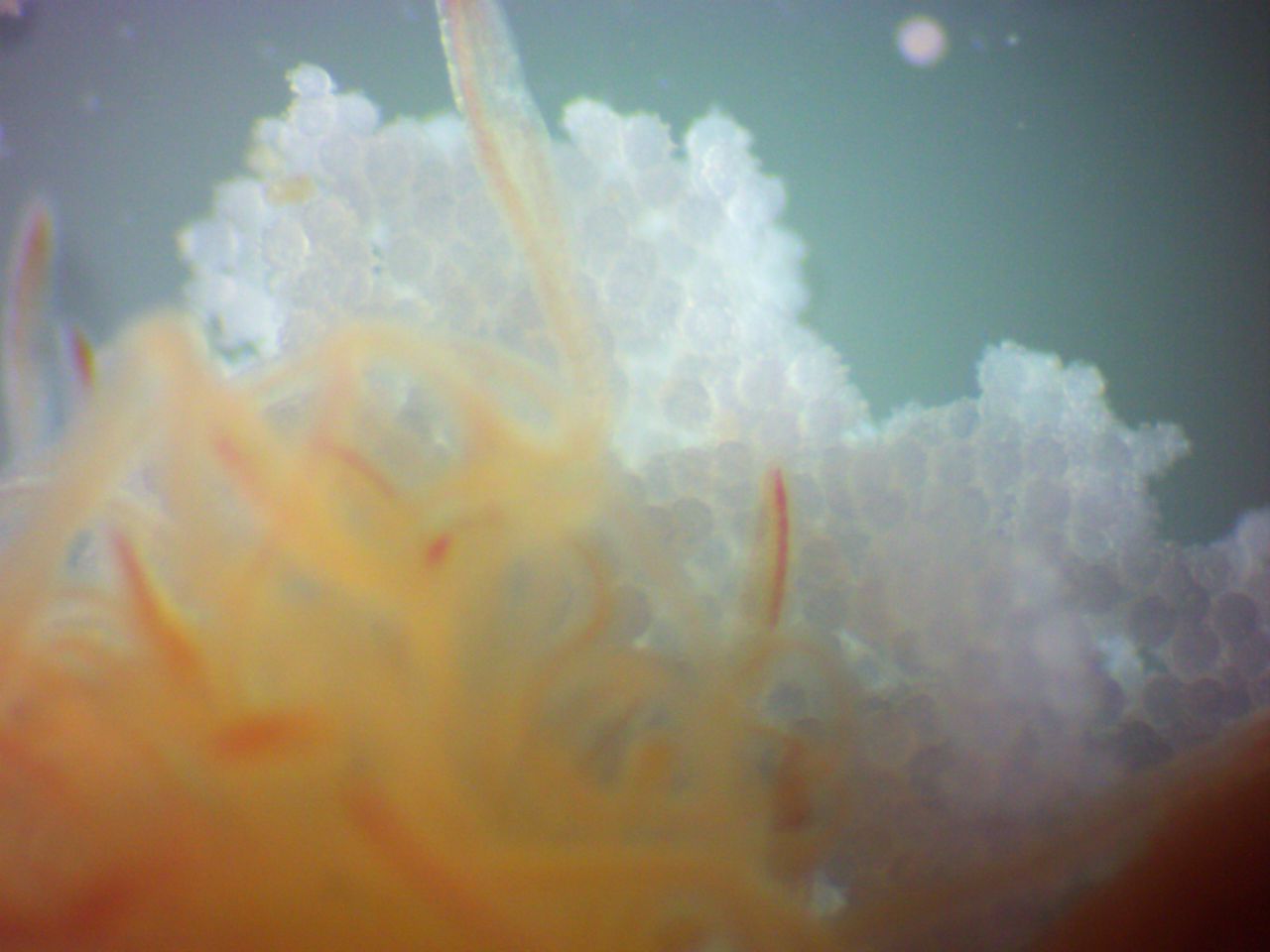
While being viewed, the animal began extruding many eggs from the
anterior
end. Photo by Dave Cowles, August 2018
For a movie scanning all the body regions click HERE.
For a movie close-up of the tentacles,
gills,
and extruded eggs
click HERE.
Authors and Editors
of Page:
Dave Cowles (2018): Created original page
CSS coding for page developed by Jonathan Cowles
Salish Sea Invertebrates web site provided courtesy of Walla
Walla University
